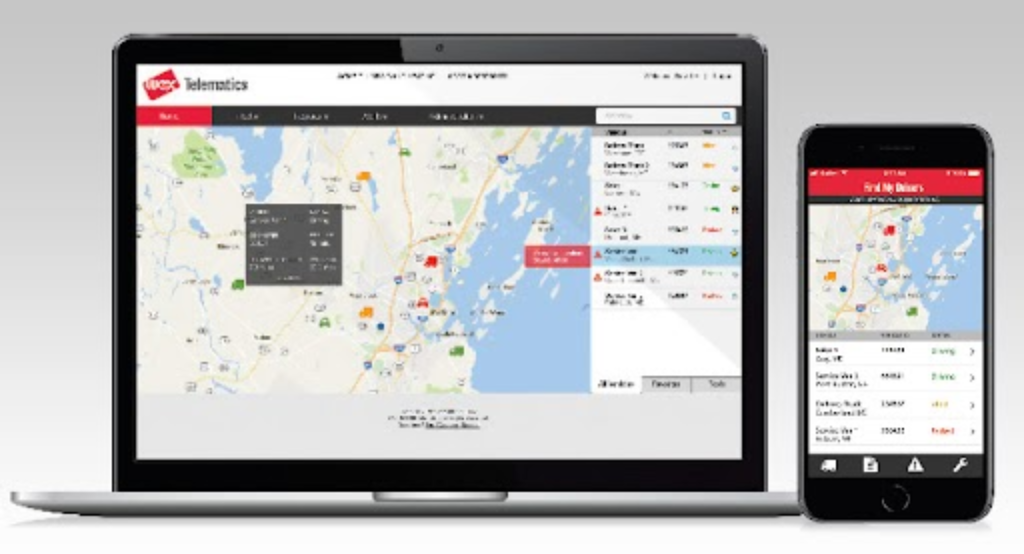Stay connected
Subscribe to our fleet blog and follow us on social media to receive all our fuel and energy industry insights.
"*" indicates required fields

As a fleet manager, it can be difficult to pull segments of data and valuable insights together across vehicles, drivers, and fuel. The larger the fleet, the more challenging it becomes to enhance operational efficiency — unless you have the right tools.
Thankfully, there are a variety of fleet management kits, strategies, and methodologies available to help you improve fleet performance and reduce operational costs across your organization.
Here, we’re covering five of the most effective ways to optimize your fleet, improve your bottom line, streamline fleet maintenance, and keep drivers safe.
Within fleet management, there are a number of operational aspects that can and should be optimized. When done effectively, fleet managers stand to experience a few valuable outcomes:
The availability and accuracy of GPS is a key component of today’s latest fleet management services and critical for optimizing certain aspects of your fleet. In fact, tracking is the fastest-growing segment of the fleet management market.

Today, many organizations rely on fleet tracking services to measure and improve operating efficiency, lower exposure to risk, and improve customer service. Telematics applications, also known as fleet tracking systems, can help business owners like you keep a finger on the pulse of your drivers and vehicles, in near real-time, from any computer or mobile device.
Here are five ways you can increase fleet efficiency using GPS technology, fuel cards, and more.
Premium GPS tracking and accompanying software show all of your critical assets in one application. Additionally, integrated fuel transactions enhance analytics reporting by combining insights for a clearer picture of your fleet assets.
Receive insights about critical rule violations, such as:
Having access to analytics and insight like these can help you reduce fuel consumption, fuel cost, and vehicle wear and tear.
By pairing GPS fleet management technology with an integrated dashboard camera, you can identify risky or dangerous situations your drivers encounter daily. A quality dash cam integrates seamlessly into a fleet management system, enabling you to capture and produce video evidence to:
Reduce insurance premiums for good driving.
Ask yourself the following questions:
By using GPS tracking to monitor drivers, you can better understand how you’re serving your customers and discover ways to improve satisfaction.
For example, you’ll have a record of the time that any particular driver spends at a customer location, allowing you to measure your Cost to Serve and also assess if more or fewer resources should be allocated to any given route or customer.
With solutions like telematics, you get near real-time insight into where your drivers are, enabling you to allocate resources quickly and as needed. This can help drive customer success levels higher by reacting to unexpected situations faster and more efficiently.
With the ability to track each one of your vehicles, you can look at your overall fleet utilization to develop operational efficiencies:
Once you analyze vehicle movement data, you can start to fine-tune your operation. By optimizing dispatch and travel routes for each vehicle, you can increase operational efficiency, deliver more goods and services on time, and reduce your overall fuel spend.
A full-featured fleet management solution – ideal for mixed fleets – can facilitate a smoother transition to bringing EVs onboard and is invaluable in today’s increasingly electric world. 16% of organizations expect their fuel costs to decrease over the next year, presumably as mixed EV/ICE fleets become more popular.
For example, tools like the EV Fleet Converter can help fleet managers understand the value of switching to electric vehicles, including the advantages it can bring to your business. By evaluating your current inventory of vehicles — and how each is used as part of your operations — the fleet converter tool can help determine and recommend which vehicles can be replaced to improve fleet operations.
These data-driven recommendations provide a clearer understanding of your fleet’s electrification potential.
As fleets begin to electrify, fleet managers must navigate a complicated set of technologies and regulations. The best fuel card providers help you keep moving by offering seamless ways to incorporate EVs into your fleet.
The best fleet management solutions offer a powerful analytics platform that helps you run your fleet more efficiently. Here are some of the most commonly used features, reports, and alerts used by fleet customers:
WEX speaks the language of small business operators. Whether you’re looking to modernize your insight and reporting efforts, save on fuel costs or take advantage of the latest GPS tracking technologies, WEX offers solutions to simplify the business of running a business. To learn more about WEX, a dynamic and nimble global organization, please visit our About WEX page.
Resources:
Fleet Car Trends Report
Editorial note: This article was originally published on October 18, 2023, and has been updated for this publication.
Subscribe to our fleet blog and follow us on social media to receive all our fuel and energy industry insights.
"*" indicates required fields